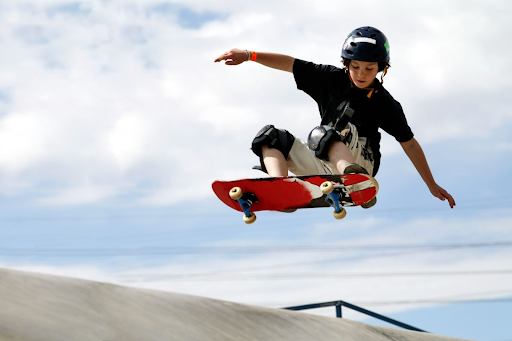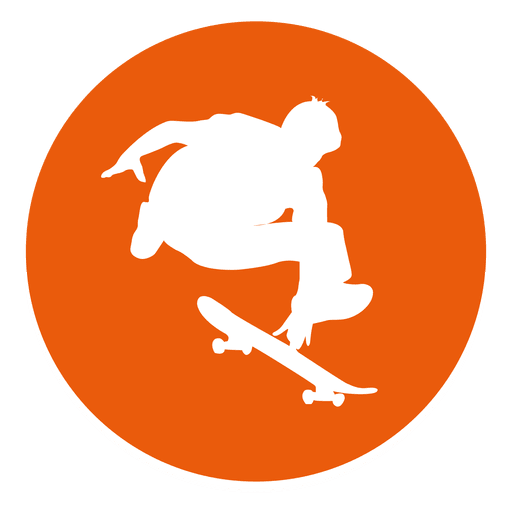Skating Locator
What Size Skateboard Should a 12 Year Old Get? (Visual Guide)

Making sure to get the correct size skateboard for your 12 year old can make all the difference in their skating experience. With so many options, it’s hard to figure out which board is best.
So what size skateboard should a 12-year-old get? The size of skateboard a 12-year-old should get is based on more than just their age. An average 12-year-old should get a mid-sized board if they are 4”5″ to 5’2″ tall and wear a size 7-8 shoe size. Make to get the right board that fits their size, not their age.
Also, if you’re looking for local skateboard parks to practice at, find one in your state here.
We hope that you’ll find this article helpful and that you’ll be able to determine the correct skateboard for your 12 year old!
The most important part about choosing a skateboard is not the length, but the width of the skateboard deck. The width that your 12-year-old will need depends on their height, shoe size, skating style, and preferences.
Choosing a board that is too big for your 12-year-old will result in needing to exert more energy, which makes skateboarding and doing tricks more difficult. However, if you choose a skateboard that is too small, you will have trouble balancing.
The width of the board also plays a part in your skating style and preferences. Here is a quick guide:
- 7.5″ to 8″ – This is a standard skateboard width for teenage and adult riders who prefer street skating or performing more technical tricks
- 8.0″ to 8.25″ – This skateboard width is a little larger for pool skateboarding, ramps, rails, and regular skateboard parks
- 8.25″ and larger – These are the largest width skateboards that are great for vert skateboarding, pool skateboarding, cruising, and for anyone who just wants to go a little old school.

Determining the style of skateboard that your 12-year-old should get depends greatly on the type of skateboarding they want to do. Many factors determine how the skateboard will perform for each style. From the width, length, rail style, wheelbase, and even the type of wood that the deck is made from all need to be taken into consideration.
Here is a break down of the skateboard and how each part affects the skating style:
Width. Larger skateboarders and those who just want to skate ramps and vert ramps should go with a wider deck. Whereas, those who only want to street skate will usually need a smaller deck.
Nose and tail. The nose refers to the front of your skateboard while the tail is the back. It can be hard to figure out which end is which but most skateboard decks will have graphics to indicate the nose from the tail. Another way to tell the difference is the board might have a bigger kick on the nose and smaller kick on the tail.
Length. Skateboard length is measured by the distance from the tip of the nose to the tip of the tail. Advanced skaters refer to board length (usually between 28″ and 32″) but you’ll want to give more consideration to the width and wheelbase when buying or building a skateboard.
Wheelbase. This is the distance between the board’s inner mounting holes. This measurement determines how far apart your front and back wheels will be. The average wheelbase is approximately 13″ to 15″. The wheelbase will pay a huge role in how well your board performs. You should try different boards with varying wheelbase distances to see what works best for you. Usually, your experience level will indicate the right wheelbase for you.
Mounting holes. These are pre-drilled holes where the skateboard trucks are attached at the deck. They are usually arranged as two sets of four holes… one set of four is near the nose and the other near the tail.
Ply. This is the thin layers of wood that are tightly pressed together to make the skateboard deck. Instead of making the deck from a solid piece of wood, thin layers are compressed together in a cross-grain pattern. This board makes an extremely strong skateboard deck. Skateboard decks are usually around 7-ply and could be as thick as 9-ply.
Concave. This is the curve of the wood between the deck’s nose and tail. Concave allows a more controlled ride and a stronger skateboard. There are seven different concave shapes; radial, progressive, w-concave, flat-cave, asymmetrical, convex, and flat.
Rails. The edges along the length of your board are called the rails. Their shape can make a difference in how the skateboard rides. Rounded rails are great for flip tricks and sharp rails have a blunt edge which keep your shoes in place during slides. Gas pedal rails (or GPs) are specialized rails that have been cut to a beveled edge. This style takes away the sharpness and decrease the concave.

Different Types of Skateboard Deck Styles
There are four different basic styles of skateboard decks that any beginner skateboarder should familiarize themselves with; shortboard, cruiser, old school, and longboard.
What is a shortboard skateboard?
A shortboard is great for cruising around town and street skating. A lot of people like them because their lightweight enough to carry around when not in use and they are easily maneuverable through the streets. Shortboards are also great for tricks because they tend to get more air.
What is a cruiser skateboard?
A cruiser is a smaller, thinner skateboard that is intended for getting you from one place to another rather than doing tricks or jumps. They are much easier to navigate on bumpy roads and can reach a decent speed as well.
What is an old school skateboard?
Old school skateboards have an asymmetrical shape with a wider nose and a flatter nose and kicktail. They are better for skating pools, ramps, and street skating.
What is a longboard?
A longboard is just like it sounds. It’s for people who don’t want to do a bunch of tricks but would rather use it for transportation and downhill racing. Downhill longboards have a symmetrical shape, sit lower to the ground, and have wheel cutouts, which allow larger wheels to be used.
Visual Skateboard Size Guide
The size of skateboard that you get for your 12-year-old is going to depend on his or her height and shoe size. Never go by their actual age, but rather by what would fit them best.
| Micro Skateboard | Mini Skateboard | Mid-Size Skateboard | Full Size Skateboard | |
| Rider Age | 5 years old or younger | 6-8 years old | 9-12 years old | 13+ years old |
| Skateboard Width | 6.5″ to 7″ | 7″ | 7.5″ | 7.5″ to 8″ |
| Skateboard Length | 27″ to 28″ | 28″ | 28″ | 29″ to 32″ |
| Rider Height | 3’4″ or smaller | 3’5″ to 4’4″ | 4” to 5’2″ | 5’3″ or taller |
| Shoe Size | 3 or smaller | 4 to 6 | 7 to 8 | 9 or larger |

What is the Best Age to Start Skateboarding?
It’s not recommended that children under 5 should skateboard at all. Children ages 5-10 can learn to skateboard but should always have supervision and wear the proper protection such as helmet, knee and elbow pads, etc.
Younger children have a higher center of gravity and poor balance which make them more likely to fall and hurt themselves. Also, their reaction times and coordination is less in tune than adults, making them less able to break their fall.
It’s perfectly fine for 5-10 year olds to start learning how to skateboard, just make sure they have the right safety gear.
Related Questions
How much does a good skateboard cost? Skateboard costs can range from $40 to $400 depending on the size and style that you choose. Beginners should start with a typical skateboard that is good for a little bit of everything from cruising to jumps and tricks, usually costing around $120 for a decent board.
How dangerous is skateboarding? Skateboarding is not as dangerous as the medical community makes it out to be. However, skateboarding should be limited to skate parks and riders should always wear protective gear.





